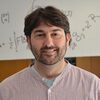Convocatoria 2021 – «Proyectos de Generación de Conocimiento»
Introduction
Cancer is the second major cause of death worldwide (after cardiovascular diseases), being recognized as a global threat. Researchers have made major advances in learning more details about how to prevent, diagnose, and treat cancer. However, many aspects of this complex and multifaceted disease remain unknown. Multidisciplinary research combining mathematical modelling with real data in this area becomes essential to understand how tumors grow, evolve, and evade selective pressures such as the immune system (IS) or therapies. The complexity of tumors brings about a large number of questions such as how heterogeneity and stochasticity affect cancer cells proliferation, the action of the IS on them, and the evasion of anticancer therapies. These features are addressed in this proposal within the framework of dynamical systems theory and multi-scale modelling applied to cancer evolution and anticancer therapies.
Heterogeneity is a primary cause of resistance to targeted treatments in cancer therapeutics. A diverse distribution of phenotypically distinct tumor cells prior to drug treatment predisposes to nonuniform responses, leading to the elimination of sensitive cancer cells whilst leaving resistant subpopulations unharmed. There is ample evidence of genetic diversity among cancer cells both within and across tumors, with genomic instability being the main engine of heterogeneity. However, it is now apparent that genetic variability alone does not account for the whole variation in responses to targeted anti-cancer drugs. Non-genetic heterogeneity has several sources: epigenetic, stochastic, and environmental. These sources of heterogeneity can produce phenotypic diversity even in genetically identical cells. Not surprisingly, the analysis of the consequences of non-genetic cell-to-cell variability in the cellular response to drugs and its potential impact for the treatment of human diseases including cancer has become a crucial issue to understanding drug resistance phenomena and developing new targeted agents.
The overarching aim of this project is to further develop our research on the role of heterogeneity in cancer, identifying routes to and mechanisms of resistance to treatment, and, finally, evaluate the rational design of combinatorial therapies involving existing drugs and prescribe new therapeutic strategies to overcome the effects of heterogeneity. To this end, we will apply a number of mathematical techniques, ranging from dynamical systems theory to multiscale hybrid modelling. These techniques will allow us to tackle issues related to the generation of heterogeneous behavior in tumors (degradation of epigenetic landscapes (ELs) and tumor-induced angiogenesis), its role in immunoediting, how heterogeneity in cancer cells affects the outcomes of immunotherapy and oncolytic virotherapy, and the effects of noise on autocatalytic processes in cancer.
OBJECTIVES
a. Investigate dynamics and bifurcations in autocatalytic processes in cancer cells proliferation i.e. autocrine and autocrine-paracrine signaling, considering stochasticity and explicit space.
b. Formulate models to investigate global transitions in epigenetic landscapes (ELs) and elucidate the roles of both heterogeneity in metabolic cofactors and stochasticity in the erosion of rugged, function ELs. Propose strategies for the restoration of functional ELs in cancer and ageing.
c. Model the mechano-chemical coupling in tumor-induced angiogenesis and investigate how their dysregulation contribute to heterogeneous oxygen delivery. Evaluate the viability of such coupling as a therapeutic target.
d. Investigate the evolution of immunogenicity of cancer cells interacting with IS cells and the key processes allowing avoiding the immune system.
e. Formulate experimentally-based models of metabolically-heterogeneous cancer cells and their interaction with the immune cells to elucidate optimal combination strategies of metabolic modifiers with immunotherapeutic drugs (such as anti-check point drugs).
f. Model the dynamics of the experiments with transgenic oncolytic viruses to seek for bifurcations and tumor-impairing scenarios. The models will be used to optimize the efficacy of this therapy.
g. Extend our current network of collaborations and reach the community of clinical practitioners. To this end, we plan to hold an Intensive Research Programme and hold seminars and meetings with personnel from Hospital Clínic in Barcelona and Dr Trueta Hospital in Girona.
principal investigators
Personal Website
Tomás Alarcon
ICREA – CRM
talarcon@crm.cat
I obtained my PhD in Theoretical Physics from the University of Barcelona in 2000. After that I spent many wonderful years working as a postdoc at the University of Oxford, UK (2001-2003), University College London, UK (2003-2006), and Imperial College London, UK (2006-2009). I briefly held a senior researcher and group leader position at BCAM, Bilbao, Spain (2009-2010), after which I moved the Centre Recerca Matematica where I lead the Cancer Modelling Group. I have also held visiting fellowships at the Universidad Complutense de Madrid, IIMAS (UNAM, Mexico DF), OCCAM (University of Oxford, UK), the Mathematical Institute (University of Oxford, UK), and the Mathematical Biosciences Institute (Columbus, Ohio, USA). In October 2015, I was appointed to an ICREA Research Professorship at the Centre de Recerca Matematica.
Personal Website
Josep Sardanyés
CRM
jsardanyes@crm.cat
I completed a BSc in Biology at University of Barcelona (2002) and went on to earn a Master and a PhD in Biomedicine (2009) at the Complex Systems Lab (CSL, Universitat Pompeu Fabra). During my PhD thesis I worked on dynamical systems and complexity in Biology. Upon obtaining my PhD degree, I moved to Valencia where I took up a postdoc position at the Institute of Molecular and Cellular Plant Biology (Consejo Superior de Investigaciones Científicas-UPV). In 2011 I moved to The David J. Gladstone Institutes for a second postdoc (University of California San Francisco, USA), where I focused on the evolutionary dynamics of RNA virus. Then, I moved again to the CSL where I completed a third postdoc (2012-2016) working on cancer evolution, theoretical ecology and systems and synthetic biology. In 2017 I became a researcher at the CRM.






